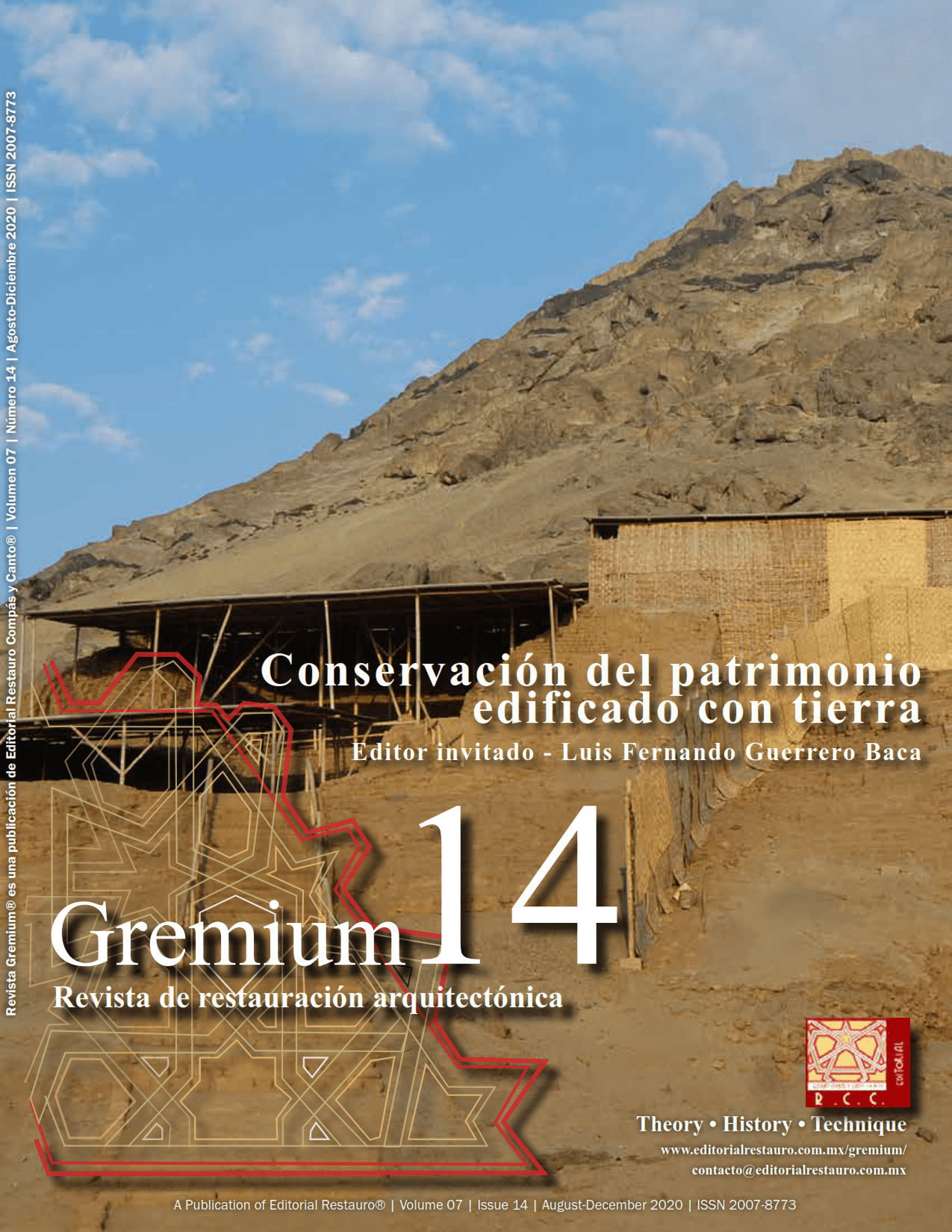Characterization of earthen plasters Influence of formulation and experimental methods
DOI:
https://doi.org/10.56039/rgn14a12Keywords:
clayish earth, phase change material, sandAbstract
All over the world there is a vast heritage of earth construction where earth plasters were applied. Nowadays, due
to environmental but also technical reasons, new earth plasters are also applied on common new masonries.
That is why its characterization, in the laboratory but also in situ, is very important. In the present study, a pre-
mixed earth plastering mortar (as control) and nine earth-based plastering mortars formulated in laboratory with
different compositions were characterized. These mortars were formulated with 1:3 (illitic clayish earth:aggregate)
volumetric ratio. The aggregate comprises a variation of fine and coarse sand and the partial replacement of the
fine sand by a phase change material (PCM). The influence of the addition of a low amount of oat fibers is also
evaluated. The mortars were characterized by different methods in laboratory and on an experimental wall exposed
outdoors by destructive and nondestructive methods: dry bulk density, dynamic modulus of elasticity, flexural and
compressive strengths, adhesive and shear strengths, dry abrasion resistance, surface cohesion, ultrasonic pulse
velocity and hardness. Results were discussed and some were correlated. Most mortars present good mechanical
strengths. However, the addition of PCM significantly decrease the mechanical strength of mortars. In terms of
mechanical properties, the addition of oat fibers only promotes an improvement on adhesive strength. The simple
surface hardness by durometer presents laboratory and in situ results well correlated for earth mortars without
PCM.
Downloads
Downloads
Published
Issue
Section
License

This work is licensed under a Creative Commons Attribution-NonCommercial-ShareAlike 4.0 International License.























